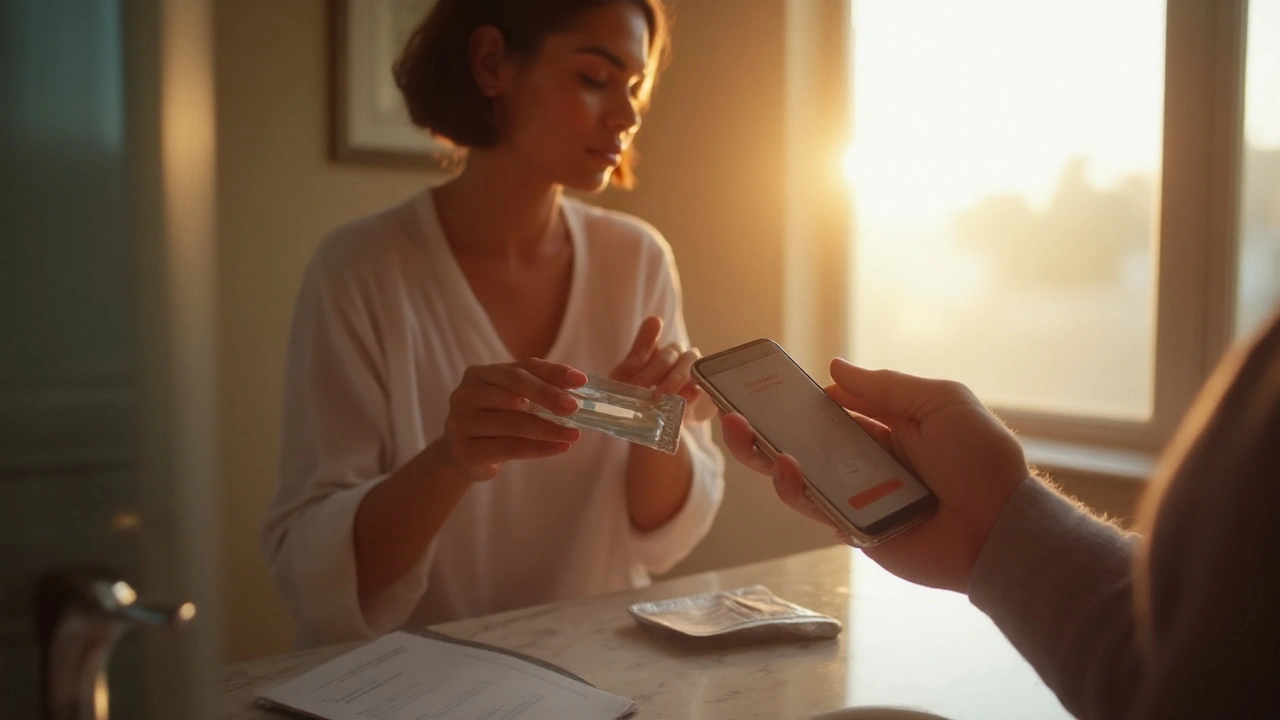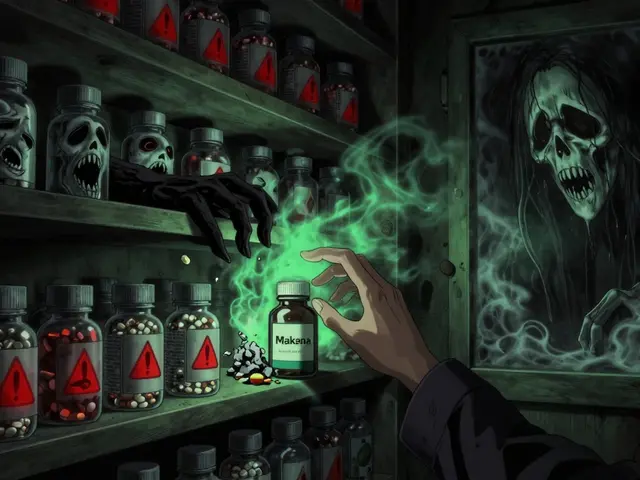Short answer: no-you can’t get a reliable result by reusing a home pregnancy test. I get why you’d want to try. Tests aren’t cheap, and faint lines can make anyone second-guess. But once a test has been used, the chemistry is spent, the strip is contaminated, and the result you’ll get next time is basically a guess. Here’s the straight, science-backed version of what happens, how to retest the right way, and when to talk to a clinician.
TL;DR: Reusing a pregnancy test-what you need to know
- Reusing a test does not work. Home pregnancy tests are single-use immunoassays. Once they’ve been wet and run, the reagents are done.
- It’s not a hygiene win either. A used strip isn’t sterile, and drying it doesn’t reset it. The real risk is a wrong answer when you need a clear one.
- False results are common when you test early, read outside the time window, or use diluted urine. If you get a confusing result, use a fresh test after 48 hours.
- Follow the time window printed in the instructions (often 3-10 minutes). Lines that appear later are usually evaporation lines, not positives.
- If you’re unsure, repeat with first-morning urine or get a blood test. A clinician can check quantitative hCG and rule out issues like ectopic pregnancy if you have pain or heavy bleeding.
Why a reused test won’t work: science, safety, and myths
Home pregnancy tests look simple, but they’re tightly engineered lateral-flow immunoassays. The sample (urine) wicks across a pad carrying antibodies that bind to human chorionic gonadotropin (hCG). If hCG is present at or above the test’s sensitivity threshold, a colored line appears. That reaction is one-and-done. Antibodies bind irreversibly. The dye particles migrate once. When the strip dries, salt crystals and residue change how fluid would flow the next time-if it even flows at all.
The U.S. FDA clears these as single-use devices, and every major manufacturer prints “one-time use” in the instructions for use. Professional groups like ACOG explain that hCG rises predictably early in pregnancy (doubling about every 48-72 hours), which is why retesting with a new device after two days is the standard advice. Reusing an old device clashes with how the assay works and how it’s regulated to be used.
Let’s tackle common myths head-on:
- “If I rinse and dry it, I can use it again.” No. Water or alcohol will damage the strip and dilute or move reagents. Drying creates streaks and residue. The chemistry does not reset.
- “It showed a faint line yesterday. If I reuse it tomorrow, I’ll get a darker line.” Not how it works. Darkness relates to how much fresh hCG is in the fresh sample and how the fresh reagents respond-both are gone after first use.
- “Digital tests are different.” The detector is different, not the chemistry. The internal strip is still single-use. The electronics just read it for you.
- “Used tests are dangerous to handle.” Your own used test isn’t a major biohazard, but it’s not clean. The bigger hazard is making a decision (medication, drinking, delaying care) on a wrong result.
Why are wrong results so easy to get when misused? Three main reasons:
- pregnancy test strip reagents degrade after wetting: The labeled antibodies bind, migrate, and won’t perform again.
- Timing windows matter: Most tests must be read at a specific minute mark (e.g., 3-5 or up to 10 minutes). After that, evaporation lines can appear as the background dries.
- Concentration matters: hCG appears after implantation. Test too early or with diluted urine and you can miss it-even if you are pregnant.
Here’s a quick spec snapshot to show why “fresh test, fresh sample” beats every DIY workaround.
| Test type | Typical sensitivity (mIU/mL) | Earliest reliable use | Read window | Reuse allowed | Notes |
|---|---|---|---|---|---|
| Dip strip (test cassette/strip) | 20-25 | Day of missed period (or later) | Usually 3-5 min | No | Low cost; requires controlled dip time and level |
| Midstream stick | 20-25 | Day of missed period (or later) | 3-10 min (brand-specific) | No | Convenient; fewer handling steps |
| Digital stick | ~25 (varies) | Day of missed period (or later) | Auto-displays within minutes | No | Electronic readout reduces line-interpretation errors |
Sources noted: FDA device labeling requirements (single-use), manufacturer instructions from major brands, and ACOG’s guidance on early pregnancy testing and hCG trends. A few brands advertise “early results,” but even those are single-use and still produce the most dependable results from the day of a missed period onward.

Do it right: how to retest safely and read results the right way
If you’re second-guessing a result, your best move is not to salvage an old test-it’s to run a fresh one under the best conditions. Here’s a simple plan.
Step-by-step retest plan
- Wait 48 hours if your last test was negative or unclear. hCG typically doubles every 2-3 days early on. This is why waiting works.
- Use first-morning urine. It’s more concentrated, which boosts the chance of detecting early hCG.
- Check the expiration date and read the instructions. Different brands have different dip times and read windows.
- Time it. Use a timer on your phone. Read the result at the exact window the instructions say-no earlier, no later.
- Photograph the result right at the read time if you want documentation, but don’t “re-interpret” a test that develops a new line 30 minutes later. That’s almost always an evaporation artifact.
Quick decision guide
- If it’s a clear positive within the time window: You’re very likely pregnant. Consider confirming with a clinician, especially if you take medications or have medical conditions where early care matters.
- If it’s negative but your period is late: Wait 48-72 hours and test again, or ask for a blood test (quantitative hCG).
- If it’s a faint line within the time window: Treat as positive, but retest in 48 hours to see if it darkens. If the line never gets darker or you develop pain/bleeding, seek care.
- If it’s a line that shows up after the read window: Ignore it. That’s a classic evaporation line.
How to avoid the most common pitfalls
- Don’t overhydrate before testing. Too much fluid can dilute hCG and flip an early positive to a false negative.
- Don’t dip too long. Oversoaking swamps the strip and messes up the flow. Follow the seconds in the instructions.
- Don’t store tests in hot bathrooms or cars. Heat and humidity degrade the reagents and raise the odds of a bad read.
- Don’t test too soon after possible conception. Many eggs implant 6-10 days after ovulation; you may need to wait until the day of a missed period to get a solid positive.
- Don’t crack open digital tests to hunt for lines. The internal strips weren’t designed to be read by eye.
Medications and conditions that can confuse results
- hCG trigger shots or fertility injections containing hCG can cause true false positives for up to 10-14 days after the shot.
- Perimenopause and some ovarian cysts rarely raise hCG-like substances; if results don’t match your cycle, ask for blood testing.
- Recent pregnancy loss or birth can leave residual hCG for weeks.
- Most common meds (antibiotics, pain relievers, birth control) don’t affect the test-but always check if you’re on something unusual.
Safety and disposal basics
- Used tests go in regular trash. Wrap them if you prefer. Keep away from kids and pets.
- Do not clean or reuse. You can’t sanitize the strip without destroying it, and you can’t restore its function.
- Worried about cost? Look for multi-packs, community health clinics, or pregnancy resource centers that offer free or low-cost tests.
FAQ, troubleshooting, and next steps
Frequently asked questions
Can I dip the same test again with fresh urine later?
Still no. The first run consumes the key reagents and locks in the result. Additional dipping adds moisture and residue that can create misleading lines.
Is a faint positive real?
Yes-if it shows up within the read window. Line intensity depends on hCG level and brand sensitivity. Recheck in 48 hours. If you’re cramping or bleeding, call a clinician.
What is an evaporation line?
As urine dries, it can leave a colorless or grayish line where the test line would be. It often appears after the valid read time. That’s why timing matters.
Could a reused test give a false positive?
It can give any random-looking result, including lines that look positive. They’re not dependable. Rely on a fresh test or a blood draw.
Do I have to use first-morning urine?
It’s best for early testing. If you’re a week late, any time of day is usually fine, but avoid heavily diluted urine.
What if I have an IUD or I’m on birth control?
These don’t affect hCG. If you test positive while using contraception, confirm promptly since ectopic pregnancy risk exists with IUDs. Seek care for pain or heavy bleeding.
How soon can a blood test detect pregnancy?
Quantitative hCG blood tests can detect very early levels and are more sensitive than urine tests. They’re the gold standard if results are unclear or urgent.
When to call a clinician
- Severe one-sided pelvic pain, shoulder pain, or dizziness with a positive or unclear test-these are red flags for ectopic pregnancy and need urgent evaluation.
- Heavy bleeding or clots with a positive test.
- Persistent faint positives that never get darker over several days.
- Conflicting home results when timing matters (planning medication, surgery, or imaging).
Troubleshooting by situation
I tested negative three days before my period but I feel pregnant. Early negatives are common. Wait until the day of your missed period or 48 hours after and retest with first-morning urine.
I got a positive last night and a negative this morning. The negative may be due to dilution, a faulty test, or a very early loss. Test again in 48 hours or ask for a blood test.
After IVF with an hCG trigger, I see a positive. The trigger can stay detectable for up to two weeks. Your clinic may schedule a blood test at a specific day post-transfer; follow their timing.
I opened a digital test and saw two lines inside. Am I pregnant? Ignore internal lines. Digital devices use algorithms on the strip signal-not human eyes-to decide “Pregnant” or “Not Pregnant.”
My test was stored in a hot car. Heat can ruin it. Use a different test from a box stored at room temperature.
Budget tips without cutting reliability
- Buy generic dip strips in a multi-pack for repeat testing; they use the same core chemistry.
- Use one fresh test per attempt. The money you “save” reusing can cost you certainty when it counts.
- Check for community clinics or health centers that offer free tests.
Your next steps
- Don’t reuse. Get a fresh test.
- Time your retest: 48-72 hours after a negative or faint/unclear result.
- Use first-morning urine and follow the brand’s exact timing.
- Document results at the read time, not later.
- If results conflict or symptoms worry you, ask for a quantitative hCG blood test.
Bottom line: a reused test won’t give you clarity. A fresh test, good timing, and careful reading will.






7 Comments
Vicki Roth
August 29, 2025 AT 21:54 PMI've read the breakdown on why the chemistry can't be reset, and it makes sense that the antibodies bind irreversibly. Still, I can't help but wonder if anyone has tried a gentle rinse with distilled water and waited a full day. My curiosity comes from trying to stretch a budget, not from dismissing safety. Maybe there's a study out there that tested the residual activity?
Vishal Bhosale
August 29, 2025 AT 22:40 PMCheap tests are tempting but they simply don’t work.
Garima Gauttam
August 30, 2025 AT 00:03 AMThe temptation to reuse a pregnancy strip is, in a way, a metaphor for humanity's desire to cheat nature. We assume that a simple wash can erase the past, yet the molecular story is already written. The strip’s antibodies have already formed a bond, and no amount of water can dissolve that truth. So the idea itself is flawed from the start.
Georgia Nightingale
August 30, 2025 AT 02:00 AMAlright, let's set the record straight – reusing a pregnancy test is a pipe dream that borders on theatrical tragedy. The moment that strip meets urine, a cascade of immunological choreography unfolds, and that performance can't be replayed. Imagine trying to watch the same Broadway show twice in one night without resetting the stage; the lights, the props, the actors are all spent. Manufacturers stamp "single‑use" for a reason that goes beyond legalese; it's a safeguard against the chaos of false hope. When you rinse the strip, you aren't cleansing it, you're merely smearing the remnants of a chemical confession. The faint lines you sometimes see later are not ghosts of hCG, but evaporation artifacts whispering nonsense. Even digital tests, with their fancy screens, rely on that same one‑time chemistry hidden beneath the plastic. If you think a second dip will magically darken a line, you're flirting with delusion. The hCG hormone doubles roughly every 48‑72 hours, so the proper method is simple: wait, use fresh urine, and a fresh test. This isn't just about saving a few bucks; it's about making decisions that could affect your health, your plans, maybe even your life. A false negative might delay prenatal care, while a false positive could cause unnecessary anxiety or even medical interventions. The science is clear, the regulatory bodies agree, and the countless anecdotal failures confirm it. So, grab a new test, set a timer, and respect the window the instructions give you. In the end, the cost of a fresh strip is tiny compared to the price of uncertainty.
Chris Kivel
August 30, 2025 AT 04:13 AMThanks for the detailed rundown, it's exactly the kind of practical guide many of us need. One tip I've found helpful is to place the test on a flat, non‑slippery surface and use a kitchen timer – the phone alarm sometimes gets lost in the morning rush. Also, keeping the tests in a cool drawer away from the bathroom humidity seems to preserve their reliability longer. Happy testing!
sonia sodano
August 30, 2025 AT 06:26 AMWhile the article piles on caution, it forgets that resourcefulness has driven countless innovations. If we dismissed every shortcut as dangerous, we’d never see the breakthroughs that challenge the status quo. A controlled rinse with a mild buffer, followed by a calibrated drying process, could theoretically reset the capillary flow – a hypothesis worth testing rather than outright banning. Dismissing such ideas outright feels more like gatekeeping than science.
Praveen Kumar BK
August 30, 2025 AT 08:40 AMIt's important to emphasize that spreading the notion of reusing medical devices, even something as seemingly harmless as a pregnancy test, undermines public trust in healthcare. Responsibility lies not only with manufacturers but also with those who share misinformation. Let's keep the conversation grounded in verified data and avoid romanticizing shortcuts that could jeopardize personal well‑being.